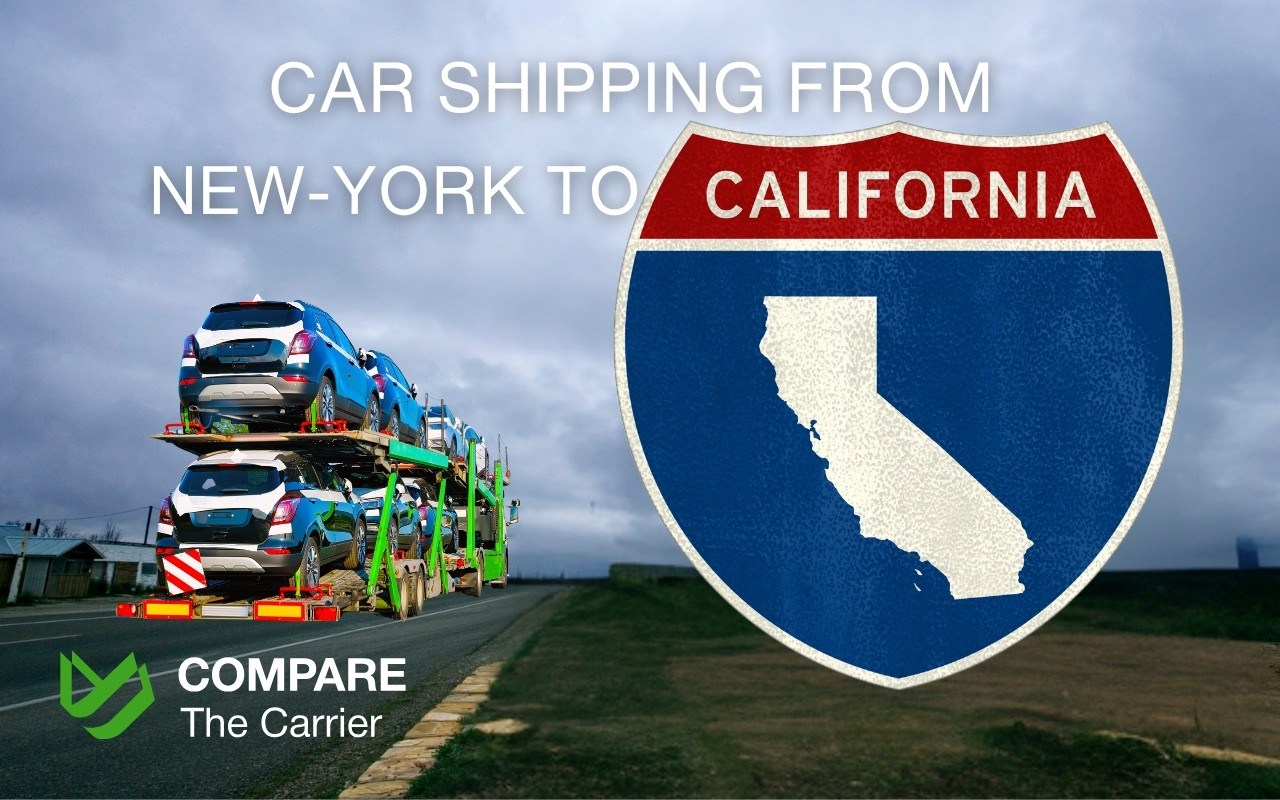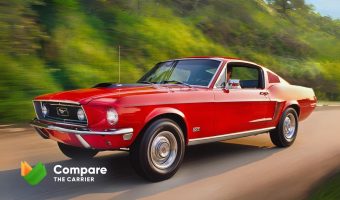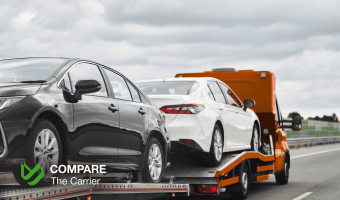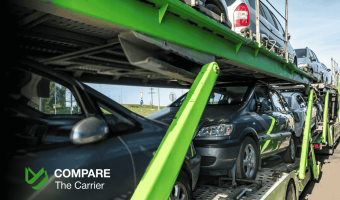Why Ship a Car from New York to California?
More than 275,000 people moved out of New York in 2024—many headed straight for the sun-drenched streets of California. Whether it’s seasonal relocation, military reassignment, a college move, or a classic car purchase, cross-country vehicle transport is no longer a niche luxury—it’s a necessity. And with gas prices fluctuating above $4.00 per gallon in many states, and long-distance road trips posing wear and tear risks, shipping a car from New York to California has become a smart, safe, and surprisingly affordable alternative.
According to the Federal Motor Carrier Safety Administration (FMCSA), licensed carriers complete over 1.5 million long-distance vehicle transports every year. CompareTheCarrier.com helps drivers cut through the noise, offering real-time quotes from top-rated auto shipping companies vetted for FMCSA compliance, insurance, and customer support ratings. With the average coast-to-coast drive spanning over 2,900 miles and taking at least 40 hours of road time, New York to California vehicle transport is no longer just an option — it’s peace of mind.
Whether you’re a snowbird heading west, a student relocating to LA, or a dealer shipping inventory to San Diego, the logistics don’t have to be overwhelming. With this guide, you’ll understand everything from pricing and prep to choosing the best car shipping company for your needs. Ready to make the move from NY to CA smarter and safer? Let’s break it all down.
How Auto Transport Works from New York to California
Shipping a car from New York to California isn’t just about booking a truck and waiting for it to arrive. It’s a tightly coordinated process that involves logistics planning, proper documentation, insurance verification, and choosing between several types of service. Here’s a breakdown of how auto transport from New York to California works — step by step:
Step 1: Requesting Quotes from Trusted Auto Transporters
The process typically starts with requesting quotes from reliable, top-rated auto shipping companies. Using a platform like CompareTheCarrier.com, you can compare quotes from multiple licensed and insured transporters side by side. These quotes are tailored based on your vehicle type, transport method, pick-up/drop-off flexibility, and exact route.
Pro Tip: Always check that the transporter is registered with the FMCSA and has a valid USDOT number. You can verify this via the FMCSA Licensing & Insurance database.
Step 2: Booking and Confirming the Shipment
Once you’ve selected a provider, you’ll book your shipment. Most companies offer two roles:
- Carriers, who physically transport your regular vehicle shipping
- Brokers, who coordinate between you and multiple carriers to get the best deal
(We’ll dive into the pros and cons of each in the next section.)
Once booked, you’ll get a contract, pick-up window, estimated delivery window, and insurance details. Make sure to read everything — including cancellation policies.
Step 3: Preparing the Car for Pickup
Before the transporter arrives, you’ll need to get your car ready (we cover this in-depth later on). This includes removing valuables, washing the exterior, taking detailed photos, and checking for any fluid leaks or low tires.
The driver will perform a pre-shipment inspection, which includes documenting the car’s condition on a Bill of Lading (BOL) — a legally binding document used throughout the transport process.
Step 4: In Transit – Cross-Country Auto Shipping
Once loaded, your vehicle will make the cross-country trek — typically taking 7 to 10 days, depending on distance, route congestion, and weather. The most common routes from New York pass through major interstates like I-80, I-70, and I-40.
Fun Fact: Cross-country car shipping from New York to California typically covers between 2,800 to 3,000 miles, depending on whether your delivery is headed to Northern, Central, or Southern California.
Throughout the transport, many trusted auto transporters offer GPS tracking or status updates, especially with top-tier enclosed carriers or expedited services.
Step 5: Delivery and Final Inspection
Upon arrival in California, you or your representative will meet the driver for final drop-off. The car will be inspected again to confirm there’s no damage beyond what was noted at pickup. You’ll sign the BOL, pay any remaining balance (if not prepaid), and the process is complete.
Case in Point: A customer in Albany used Compare The Carrier to find a five-star reviewed hauler to deliver a classic 1969 Mustang to San Diego. The vehicle arrived in 8 days, in a covered trailer, with zero issues — and for $250 less than the dealer’s quote.
Broker vs Carrier: What’s Better for New York to California Shipping?
When organizing auto transport from New York to California, one of the first choices you’ll make is whether to book through a broker or hire a carrier directly. Both options can get your vehicle from NY to CA, but understanding the differences can help you get better pricing, safer delivery, and a smoother overall experience.
What Is a Carrier?
A carrier is the company that owns the trucks and physically transports vehicles. When you deal with a carrier, you’re working directly with the source. Some carriers operate locally or regionally, while others specialize in long-haul, cross-country car shipping from New York to California.
Pros of Hiring a Carrier Directly:
- Direct communication with the driver or dispatch
- Often more control over pickup and delivery scheduling
- Avoid broker fees or markups
Cons:
- Limited truck availability, especially on popular routes or during peak seasons
- May require more effort to vet licensing, insurance, and reputation
- Not ideal if you’re unfamiliar with logistics or transport industry norms
What Is a Broker?
A broker acts as a middleman between you and a network of carriers. Instead of calling dozens of transport companies, a broker finds and vets available carriers for you. Think of brokers as the “matchmakers” of the auto transport industry.
At CompareTheCarrier, we use advanced algorithms and real-time pricing to connect users with top-rated auto shipping providers based on cost, availability, and customer reviews — all of whom are FMCSA licensed.
Pros of Using a Broker:
- More options, especially for hard-to-reach destinations in California or rural parts of New York
- Competitive pricing due to access to a wide network
- Brokers handle vetting, paperwork, and schedule coordination
- Ideal for first-time shippers or customers looking for fast and safe delivery
Cons:
- Some brokers may not be transparent about carrier qualifications (that’s why platforms like CompareTheCarrier only work with verified, insured, five-star reviewed partners)
- Less direct control over which carrier gets assigned
- Risk of bait-and-switch pricing from shady brokers
FMCSA Warning: The Federal Motor Carrier Safety Administration has issued advisories about unlicensed brokers posing as carriers. Always use a platform that verifies USDOT and MC numbers.
When a Broker Makes More Sense
For most cross-country shipping needs — especially when moving a vehicle from NY to CA — a broker is usually the smarter route. You’ll get:
- Faster access to available haulers
- Better pricing due to competition
- Help navigating logistics and paperwork
- Protection from scams through verified listings
Real Example: A family moving from Syracuse to Los Angeles used CompareTheCarrier to compare 7 quotes in one afternoon. Their broker matched them with a reliable, FMCSA-licensed carrier that had delivered over 2,000 vehicles with a 4.9-star average rating.
Bottom line: carriers do the hauling, but brokers give you the power of choice — and the confidence of working with trusted auto transporters. When done right, using a broker ensures your New York to California car shipping is affordable, efficient, and stress-free.

Car Shipping Cost from New York to California
Understanding the New York to California car shipping cost is essential before booking transport. Prices can vary significantly depending on your vehicle type, time of year, and delivery preferences. However, having a ballpark figure — and knowing what drives the cost — gives you the upper hand when requesting quotes or negotiating with a transporter.
Average Cost to Ship a Car from New York to California
As of 2025, here’s what you can expect to pay to ship a standard sedan across the country:
| Service Type | Estimated Price Range | Estimated Transit Time |
| Open Carrier (Standard) | $1,100 – $1,500 | 7–10 days |
| Enclosed Carrier | $1,500 – $2,100 | 7–10 days |
| Expedited Shipping | $1,700 – $2,400+ | 3–5 days |
Source: Internal data from Compare The Carrier (2025), based on 8,800+ completed shipments.
These prices reflect coast-to-coast car shipping from New York to California, including major cities like NYC to Los Angeles, Buffalo to San Diego, or Albany to San Jose. They also assume operable vehicles, standard dimensions, and flexibility with pickup windows.
Factors That Influence Car Shipping Costs
We’ll dive deeper into these in the next section, but in short, pricing is affected by:
- Transport type (open vs enclosed)
- Vehicle size and weight
- Seasonal demand (winter snowbirds drive up prices)
- Delivery speed
- Fuel prices and tolls
- Route congestion (urban vs rural pickups/drop-offs)
Open vs. Enclosed Transport: Big Cost Difference
- Open carriers are the most common and affordable. They’re great for everyday vehicles and offer excellent value for California car delivery from New York.
- Enclosed carriers offer weather protection and are ideal for luxury, exotic, or antique vehicles — but they come at a premium.
Real-Life Quote Example
“I shipped my 2022 Honda Accord from Brooklyn to San Francisco using CompareTheCarrier. Got quotes from five companies, chose one with a 4.8-star rating on the BBB, and paid $1,290. The car arrived in 8 days with zero issues.” — Jenna R., Verified Customer
Don’t just jump at the lowest quote — often, it’s too good to be true. Look for transparent pricing, verified insurance, and five-star reviews from real customers. Always factor in peace of mind and vehicle safety when calculating the real cost of auto transport New York to California.
Key Factors That Influence the Cost of Shipping from New York to California
When comparing quotes for car shipping from New York to California, you’ll quickly notice a wide range of pricing — and for good reason. Transporting a car across nearly 3,000 miles involves many variables, from the time of year to the type of trailer used. Let’s look at the key factors that determine your final price, so you can make informed decisions and avoid overpaying.
1. Type of Transport: Open vs. Enclosed
- Open transport is the most cost-effective option, with rates often $400–$700 cheaper than enclosed shipping. It’s used for 90% of cross-country vehicle shipments.
- Enclosed transport offers full protection from weather, debris, and road grime. This option is highly recommended for:
- Classic or antique vehicles
- Luxury or exotic cars
- High-value shipments
Choosing enclosed auto transport from New York to California can increase the cost by 30–40%, but the protection may be well worth it.
2. Vehicle Size and Weight
Larger and heavier vehicles take up more space and add weight to the load — which directly increases fuel usage and transport complexity.
| Vehicle Type | Price Impact |
| Compact Car (e.g., Corolla) | Lower cost |
| Sedan (e.g., Accord) | Base pricing |
| SUV / Crossover | +$100–$300 |
| Pickup Truck or Van | +$200–$500 |
Always provide your exact make, model, and year when requesting quotes. Some top-rated auto shipping companies also ask about modifications, such as lifted suspensions or oversized tires.
3. Time of Year (Seasonal Demand)
Demand for cross-country car shipping New York to California fluctuates with the seasons:
- Snowbird season (Oct–April): Rates spike due to retirees moving south or west for winter.
- Summer months: Student moves and family relocations increase demand.
- Off-peak (Jan, early May): Best chance for lower rates and flexible scheduling.
According to FMCSA-licensed carriers, October and March are the busiest months for NY to CA vehicle transport, with average prices 15–20% higher.
4. Delivery Speed (Standard vs. Expedited)
- Standard shipping: 7–10 days, based on distance and route congestion
Expedited shipping: As fast as 3–5 days — but expect to pay 20–40% more
If you’re working with a tight timeline, expedited shipping is worth considering. However, plan early if you want the best car shipping company at a fair price.
5. Pickup and Drop-Off Location
Urban areas like New York City and Los Angeles are major shipping hubs, which usually means lower rates and faster scheduling. But:
- Rural pickups or deliveries may require a fee or delay, since carriers may need to deviate from standard routes.
- Consider terminal-to-terminal shipping to save money if you can drop off/pick up your vehicle in a nearby metro area.
6. Fuel Prices and Route Conditions
Fuel prices directly impact shipping costs. A spike in diesel rates can raise your quote by $50–$200 depending on carrier load and distance. Weather and traffic along I-80 or I-40 — the main routes for New York to California vehicle transport — can also affect timing and cost.
7. Insurance Coverage
Reputable trusted auto transporters include basic liability coverage (usually $250,000–$1 million). But it’s worth asking:
- Is the coverage enough for your vehicle’s value?
- Are there deductibles or exclusions?
Supplemental insurance may add $50–$150 to your total, depending on the policy and carrier.

Step-by-Step Guide to Getting Your Car Ready for Cross-Country Shipping
Once you’ve chosen a trusted auto transporter and booked your car shipping from New York to California, your job isn’t done just yet. Properly preparing your vehicle ensures a smoother transport, helps avoid disputes during inspection, and protects your car during the 3,000-mile journey. Here’s exactly how to get your vehicle ready for safe, fast, and stress-free delivery.
1. Wash and Inspect Your Vehicle Thoroughly
A clean car makes it easier to spot dings, scratches, or other damage — both before and after shipping.
- Wash the exterior and vacuum the interior.
- Document the vehicle’s condition with clear, time-stamped photos from multiple angles (including roof and underbody if possible).
- Take close-ups of any existing damage.
- Date all images and store them digitally for your records.
This step protects you in case of any damage claims during auto transport from New York to California.
2. Remove All Personal Items
Carriers are not licensed to transport personal belongings. Leaving items inside can:
- Void insurance coverage
- Add weight (increasing shipping cost)
- Lead to theft or fines
What to remove:
- GPS units, chargers, dash cams
- Garage door openers, toll tags, EZ-Pass devices
- Luggage, tools, sports gear, and anything loose in the trunk
Note: Up to 100 lbs of personal items may be allowed in the trunk only if the carrier agrees. Always ask first.
3. Check Fluids, Battery, and Tires
While the carrier handles the driving, your vehicle still needs to be in operable condition unless arranged otherwise.
- Check and top off fluids (oil, brake, coolant)
- Ensure the battery is charged and terminals are clean
- Inflate tires to the recommended PSI
- Check for any leaks and get them fixed before transport
Non-running cars may still be transported, but you must inform the carrier in advance — it usually involves a higher New York to California vehicle transport cost due to winch or forklift requirements.
4. Disable Alarms and Toll Tags
A beeping alarm or charged toll pass can create headaches on the road. Be sure to:
- Disable or remove any vehicle alarms
- Deactivate toll tags (they can rack up fees during transit)
- Lock the car after it’s loaded (drivers don’t need access to the interior)
5. Leave a Quarter Tank of Gas
Why? Your car only needs to be driven on and off the carrier. A full tank adds unnecessary weight (which could affect cost or loading eligibility).
Best practice: Leave no more than 1/4 tank of gas in the vehicle.
6. Prepare Keys and Paperwork
Most carriers will require one full set of keys:
- Ignition key or key fob
- Trunk key (if separate)
- Include wheel lock key if applicable
Also, have a copy of:
- The signed transport contract
- The carrier’s insurance certificate
- The Bill of Lading (provided at pickup)
7. Coordinate Pickup Details
- Provide clear directions or gate codes if your location is tricky to access.
- Large haulers may need to meet at nearby open spaces like parking lots or rest areas due to size restrictions.
- Confirm a contact person at pickup and delivery points.
Real Example: “Our street in Queens was too narrow for the rig, but the driver called ahead and met us at a nearby Home Depot lot. It was easy, fast, and saved everyone time.” — Manuel G., Queens to Long Beach transport
Proper preparation not only protects your vehicle but also helps avoid delays or added costs. It also signals to the carrier that you’re a responsible customer — which can go a long way when it comes to care and communication during California car delivery from New York.
Choosing Between Open or Enclosed Car Transport for a New York to California Move
One of the most important decisions you’ll make when arranging auto transport from New York to California is selecting the right type of carrier: open or enclosed. Each has its own advantages depending on your vehicle type, budget, and personal preferences. Here’s how to choose the right option for your situation.
Open Car Transport — The Industry Standard
Open transport is the most common and affordable method for car shipping from New York to California. Your vehicle is loaded onto a two-level trailer — similar to those used by dealerships — along with 7–9 other cars.
Advantages:
- Lower cost: Typically $400–$700 less than enclosed
- Wider availability: Easier to schedule on short notice
- Faster shipping: More trucks on the road = quicker pickups
Best For:
- Daily drivers
- Sedans, crossovers, and compact SUVs
- Budget-conscious moves
- College students or seasonal travelers
Drawbacks:
- Exposed to weather, dust, and debris
- Minor cosmetic risks (though damage is rare with reliable carriers)
“I shipped my Toyota RAV4 from Albany to Los Angeles using open transport. It arrived in 9 days, no scratches, and I saved over $500 vs. enclosed.” — Patrick M., Verified Customer
Enclosed Car Transport — Premium Protection
Enclosed transport provides full coverage from the elements, using hard-sided or soft-sided trailers that carry fewer vehicles and provide greater security. This is the safe delivery choice for high-value, classic, or collector vehicles.
Advantages:
- Maximum protection from weather, road grime, and debris
- Often includes extra insurance and climate control
- More personalized service and communication
Best For:
- Luxury and exotic cars
- Classic cars and collectibles
- Low-clearance sports cars
- Vehicles worth over $75,000
Drawbacks:
- Higher cost: Expect to pay 30–40% more
- Fewer available trucks = longer lead times during peak seasons
“I used enclosed shipping for my vintage Porsche 911 from Brooklyn to San Diego. The driver sent daily updates and treated the car like gold. Worth every penny.” — Alexis R., Enthusiast & Collector
How to Decide: Open or Enclosed?
| Factor | Go with Open If… | Choose Enclosed If… |
| Budget | You want the most affordable option | Cost is not a primary concern |
| Vehicle Type | It’s a standard or modern car | It’s rare, high-end, or has sentimental value |
| Weather Sensitivity | You don’t mind exposure to the elements | You need full protection from weather/debris |
| Insurance Requirements | Basic coverage is sufficient | You want higher coverage and peace of mind |
Still unsure? CompareTheCarrier makes it easy — you can request quotes for both open and enclosed options side-by-side and review which top-rated auto shipping provider fits your priorities.
What to Expect on Delivery Day in California
Delivery day marks the final — and arguably most important — part of your car shipping from New York to California journey. Whether your drop-off point is in San Francisco, Los Angeles, San Diego, or a smaller city inland, knowing what to expect helps you avoid surprises and ensures a smooth vehicle handoff.
Coordinating with the Carrier
A few days before delivery, your driver (or the dispatch team) will contact you to confirm the ETA and arrange a meeting point. Remember:
- Exact timing may change due to traffic, weather, or other deliveries on the route.
- Drivers usually offer a 4- to 6-hour delivery window, which gets narrowed down on the day of arrival.
Pro Tip: Stay flexible and keep your phone handy — some rural areas or tight city streets may require meeting at a nearby open lot or parking area.
Vehicle Inspection and Final Walkthrough
Upon arrival, the carrier will unload your vehicle and perform a final inspection with you. This step mirrors the inspection done at pickup in New York and is crucial for identifying any in-transit damage.
Here’s what you’ll do:
- Review the Bill of Lading (BOL) and compare it to your original photos.
- Inspect the car’s exterior and interior for new dents, scratches, or mechanical issues.
- Note and photograph anything out of the ordinary.
- Only sign the BOL once you’re satisfied that everything matches.
Important: Any damage must be documented in writing on the BOL before signing. This ensures you’re eligible to file a claim with the carrier’s insurance, if needed.
Final Payment (If Applicable)
Some carriers or brokers require full payment upfront, while others operate on a “partial upfront / COD” (Cash on Delivery) model.
Be sure you understand:
- Your payment method: Cash, certified check, or digital payment
- Whether the balance is due at drop-off
- Any additional fees (rare, but possible with terminal deliveries or failed access attempts)
Getting Back Behind the Wheel
Once the paperwork is signed and payment is settled, you’re free to take your car. Before driving off:
- Check fluid levels, tire pressure, and battery if it was in transit for more than 10 days.
- Reinstall toll tags, valuables, and accessories you removed prior to shipping.
Real Example: “We met the hauler in a Target parking lot in Anaheim. The driver was professional, the inspection took 15 minutes, and our Subaru Outback was spotless. Whole thing went smoother than expected.” — Caroline & Dave M., NYC to Orange County
Trouble-Free California Car Delivery from New York By the time your vehicle reaches California, the hard part is done — if you’ve prepared properly and worked with a reliable, five-star reviewed transporter. CompareTheCarrier.com helps ensure that by connecting you only with FMCSA-licensed providers who are rated for safety, customer support, and on-time delivery.

Why Compare The Carrier Makes New York to California Shipping Smarter and Safer
With thousands of transport companies offering auto transport from New York to California, choosing the right one can feel overwhelming. This is where Compare The Carrier becomes your biggest asset — not just a quote tool, but a comprehensive car shipping comparison platform designed to save you time, money, and stress.
Here’s how CompareTheCarrier transforms the car shipping experience for individuals and businesses making the coast-to-coast move:
Instant Access to Verified, Licensed Carriers
CompareTheCarrier connects you with a network of FMCSA-licensed, insured, and vetted transporters. That means:
- No risk of fly-by-night operators
- Only companies with proven safety and performance records
- Verified USDOT and MC numbers for every quote
According to the FMCSA, unlicensed brokers and transport scams are on the rise. CompareTheCarrier eliminates that risk by doing the legwork for you.
Transparent Quotes — No Hidden Fees
Tired of “too-good-to-be-true” quotes that balloon later? With CompareTheCarrier:
- You see actual rates from trusted providers
- Every quote includes pickup, delivery, insurance, and fuel surcharges
- Optional services like enclosed transport or expedited delivery are clearly labeled
“We compared four quotes for our NY to CA move. Not only did CompareTheCarrier show us real prices — the carrier we picked ended up delivering two days early.” — Todd & Emily R., Brooklyn to Sacramento
Real Customer Reviews and Ratings
Each carrier listing includes:
- Verified customer reviews
- Five-star rating system based on delivery time, care, and communication
- Details on the number of completed transports and specialty services
This makes it easy to find the best car shipping company for your needs — whether you’re moving a Toyota or a Tesla.
Tools Tailored to Your Needs
CompareTheCarrier’s platform was built to serve a wide range of users:
- Snowbirds looking for seasonal relocation
- Students heading west for college
- Dealers needing multi-car fleet delivery
- Pensioners, families, and car buyers/sellers who need a safe, no-fuss solution
The platform’s tools include:
- Price comparison calculator
- Quote request form
- Live support chat for real-time answers
Expert Customer Support When You Need It
Shipping your car isn’t just a transaction — it’s logistics. CompareTheCarrier provides U.S.-based support from real auto transport experts, not bots.
Whether you have questions about your quote, insurance, vehicle prep, or the BOL, you’ll have access to helpful support — before, during, and after your cross-country car shipping New York to California.
Smarter, Safer, and More Affordable
When you combine transparent pricing, vetted carriers, real reviews, and expert support, you don’t just save money — you ship smarter. That’s why CompareTheCarrier is the go-to platform for anyone planning California car delivery from New York.
Whether you’re relocating your family, delivering inventory, or moving a prized classic, CompareTheCarrier ensures it’s done right — with the best transporters, at the best price.
Conclusion
Shipping a car from New York to California doesn’t have to be complicated, stressful, or overpriced. Whether you’re heading west for school, escaping a snowy winter, relocating for work, or buying/selling a car across states, understanding the process puts you in control.
Here’s what you now know:
- The Process: From pickup to delivery, car shipping follows a structured, transparent process when done with reliable, FMCSA-licensed carriers.
- The Costs: New York to California car shipping cost typically ranges from $1,100 to $2,100+, depending on your vehicle type, transport method, and delivery preferences.
- Preparation Is Key: How you prep your car (documentation, inspection, cleaning, removing valuables) affects safety and insurance coverage.
- Choosing the Right Type: Open transport works for most, but enclosed offers superior protection for high-value vehicles.
- Delivery Day Expectations: Inspection, documentation, and coordination are all crucial for a smooth handoff.
- CompareTheCarrier Advantage: Instant quotes, real customer reviews, expert support, and only top-rated auto shipping providers make the whole experience seamless and trustworthy.
Ready to Ship from NY to CA?
At CompareTheCarrier.com, we’ve helped thousands of individuals and businesses coordinate fast and safe delivery for their vehicles across state lines. We’re not just another aggregator — we’re your partner in the process, committed to transparent pricing, trusted auto transporters, and five-star customer support every step of the way.
🚀 Get Started Now: Request a Free Quote or use our real-time price comparison calculator to find your perfect match for auto transport from New York to California.
Ship smart. Ship safe. Ship with confidence — from NY to CA.
FAQ
How long does it take to ship a car from New York to California?
The average transit time for vehicle transport from New York to California is 7 to 10 days under standard shipping conditions. Factors such as weather, road closures, driver availability, and your specific pickup and drop-off locations can influence this window.
Expedited services are available and can shorten the timeframe to 3 to 5 days, though they come at a higher price
Pickup typically occurs within 1 to 5 business days after booking, depending on carrier availability.
Pro Tip: Booking early (2–3 weeks in advance) gives you the best choice of carriers and more control over timing.
What is the average cost to ship a car from NY to CA?
The New York to California car shipping cost ranges from $1,100 to $2,100+, depending on:
Transport type (open vs enclosed)
Vehicle size, weight, and operability
Pickup and drop-off flexibility
Seasonality (winter snowbird season can raise rates)
Fuel prices and route conditions
Use CompareTheCarrier’s free quote tool to instantly see accurate, up-to-date pricing from verified, five-star reviewed carriers.
Is shipping my car safer than driving it myself?
Yes — especially for long hauls like the 2,900+ mile route from NY to CA. Here’s why:
Avoids wear and tear on your vehicle
Eliminates fuel, lodging, and food expenses
Reduces exposure to road hazards, accidents, and weather conditions
Keeps mileage low, preserving resale value
All top-rated auto shipping companies on CompareTheCarrier are FMCSA licensed, insured, and vetted for safety and reliability.
Can I put personal items in my car during shipping?
Most carriers allow up to 100 lbs of personal items, limited to the trunk or cargo area, and at the owner’s risk. However:
Items must be secured (no loose objects)
You cannot store electronics, valuables, or prohibited goods
Insurance does not cover personal belongings
Always confirm your carrier’s specific policy before loading anything into your vehicle.
Do I need to be present for pickup and delivery?
Yes, ideally. Either you or a designated representative must be present to:
Sign the Bill of Lading (BOL)
Conduct vehicle inspections at pickup and drop-off
Approve the vehicle’s condition and delivery details
If you can’t be present, notify the carrier in advance and authorize someone to act on your behalf.
What if my car is damaged during shipping?
While damage during cross-country car shipping from New York to California is rare, reputable carriers carry insurance to cover potential incidents.
Here’s what to do:
Thoroughly inspect your car at delivery.
Note any damage on the Bill of Lading before signing.
Take timestamped photos for your records.
File a claim with the carrier’s insurance — reputable companies will guide you through the process.
CompareTheCarrier only lists carriers that meet high insurance standards and safety records to minimize risk.
Is it better to use a broker or contact a carrier directly?
Using a broker — especially through a platform like CompareTheCarrier — gives you access to:
A nationwide network of pre-vetted, licensed carriers
Competitive pricing through multiple bids
Greater flexibility for scheduling
Professional logistics support and communication
Direct carrier booking can work if you know the industry, but for most people, brokers provide more peace of mind and better value.
What documents are needed to ship my car?
Typically, you’ll need:
A valid government-issued ID
A copy of the vehicle registration and title
Signed shipping contract and Bill of Lading
If applicable: power of attorney or release authorization for someone else to handle the shipment.
You do not need your insurance card unless you’re purchasing additional coverage or required by the carrier.













